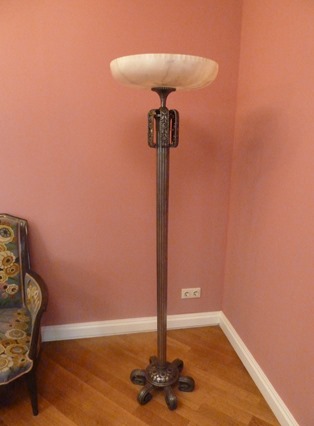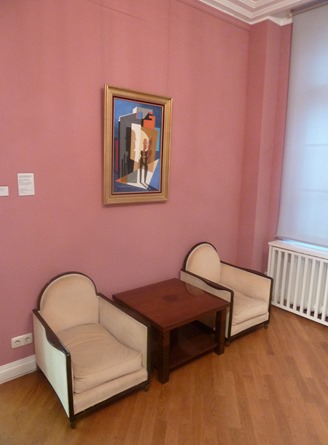
This excellent little museum devoted to Art Nouveau / Jugendstil, Art Deco and German Functionalism is on Schlossstrasse, next door to the Berggruen Museum. As I’m quite an Art Nouveau and Art Deco fanboy, and as cost of entry was included in our newly purchased 3 day Museum Pass, a visit was obligatory!
The museum’s collection of furniture, porcelain, ceramics, glass, silverware, other domestic articles and paintings was donated to the city of Berlin by a businessman, Karl Bröhan, on his 60th birthday. It’s arranged in a series of “room ensembles” with furniture, objects and paintings in a particular style or from a particular period. The exhibits are arranged so that visitors proceed through time as they move through the exhibition on the ground floor.
The first room had some classic Art Nouveau furniture designed by none other than Hector Guimard, best known for his Nouveau Paris Metro Stations.
This sideboard is by another French artist Eugène Gaillard. It’s made from walnut wood with brass fittings with a swirling line decoration typical of Art Nouveau style
These chairs and tables, while still very ornate, are starting to suggest an evolution towards a simpler, less florid, shape.
This three piece suite ornate upholstery but with simpler shapes
The accompanying standard lamp was still very fancy
A simpler, more angular look – we’re definitely into Art Deco now!
These look like they’ve come out of a 1930’s film set – and Art Deco is very much associated with Hollywood
These next few pieces are examples of the application of good design principles applied to mass manufactured furniture and other household objects – an approach that was later to be adopted by the Bauhaus.
These table, chairs and sideboard were created in 1902 by Peter Behrens for the “Modern Living Interiors” Exhibition at Wertheim’s Store in Leipziger Straße in Berlin.
Behrens was an important figure in the Modernist movement and was a major influence on Ludwig Mies van der Rohe, Le Corbusier, Adolf Meyer, Jean Kramer and Walter Gropius who were either his students or assistants.











